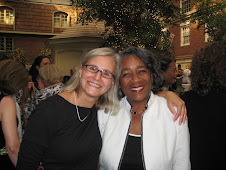- Students pair up A and B, and they sit shoulder to shoulder, not facing each other.
- A reads to B for 30 seconds with both students looking at the text.
- Then B puts the text face down and paraphrases to A what was read.
- For the next 30 seconds B reads to A (starting where the partnership left off), followed by A's paraphrase.
- Rotations continue until the students finish reading the text.
Many teachers at last week's site visit were skeptical of the strategy because of the noise that might happen in the room and because the teachers felt comprehension would go down because students do not read at the same pace. However, Beth Neary tried the paraphrase passport reading strategy in her small, AP Spanish Literature class, and she sent this report.
Positives – 9 students want to do it many more times this year!
· If you missed part of the reading, your partner recaps/explains it to you
· It is a fun way to read
· It keeps you focused while reading as you have to keep switching roles
· “I know a lot more because we read it two times” – translated by Beth Neary
Negatives – 1 student did not like it that much, but was fine if we do it again
· It takes longer to read
· It loses a bit of the excitement as you have to keep stopping
Suggestions from students:
· Give 2 minutes to read and one minute to recap (I think that’d change due to the difficulty of the reading), but the short 1-2 minute periods were actually more effective than Beth thought they’d be.
Observations by Beth:
· The students were really into it and wanted to continue the whole hour to finish the story.
· While they recapped, Beth heard them actively analyzing. Examples heard: “I bet the apron represents the lower class.” “I bet the señora will do something crazy.” “He’s definitely criticizing class struggles – Neary’s going to make us write an essay on that.”
Basically, the observation Beth had was that the strategy helped students cue into what was important in the reading. Beth was quite surprised. She liked it!











